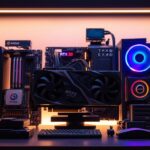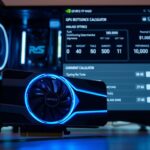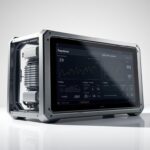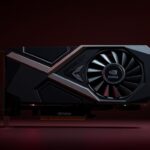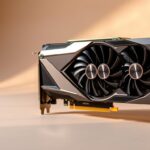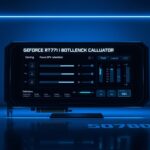Last Updated on August 7, 2025 by Gill
Remember the last time your screen froze during an intense gaming session? Or when your video editing software lagged right before a deadline? These moments aren’t just frustrating – they’re often warning signs from your computer’s unsung hero: the graphics card.
Your graphics hardware works tirelessly to bring pixels to life, whether you’re exploring virtual worlds or designing 3D models. Like a car’s engine, it needs regular attention to avoid breakdowns. I learned this the hard way when outdated drivers nearly ruined my favorite racing game – a problem that could’ve been caught with simple monitoring.
Casual users and power gamers alike benefit from understanding their system’s visual capabilities. Modern graphics cards handle everything from streaming videos to rendering complex animations, making their performance crucial for daily tasks. Without proper care, even high-end hardware can struggle with basic functions over time.
This guide simplifies the process of evaluating your system’s visual powerhouse. We’ll explore built-in diagnostic tools, interpret temperature readings, and share maintenance tricks that take minutes to implement. You’ll discover how to spot early signs of wear and keep your machine running like new – no technical expertise required.
By the end, you’ll have the knowledge to prevent unexpected crashes and extend your computer’s lifespan. Let’s ensure your graphics hardware stays as ready for adventure as you are.
Understanding Your GPU and Its Role in System Performance
Your graphics processing unit works behind the scenes every time you scroll through social media or watch a movie. This specialized hardware acts like a visual translator, converting raw data into images faster than you can blink.
What is a GPU? (Discrete vs Integrated)
Modern computers use two main types of graphics processors. Discrete models are separate components with dedicated cooling systems – ideal for video editing and high-frame-rate games. Integrated versions live directly on your motherboard, perfect for everyday tasks like streaming shows or browsing the web.
Why GPU Health Matters for Optimal Performance
A well-maintained processing unit ensures smooth visuals and prevents overheating. Regular checks help identify issues before they affect your gaming experience or creative projects. Dust buildup or outdated drivers can turn even a powerful GPU into a sluggish performer.
Laptop users should pay extra attention to heat management. Integrated graphics may struggle with modern games, while discrete models in desktops need proper ventilation. Knowing your device’s capabilities helps avoid frustrating lag during crucial moments.
How to Test GPU Health and Performance
Your computer’s visual capabilities hide in plain sight, accessible through simple navigation paths. Windows offers multiple built-in solutions that reveal critical details about your graphics hardware. Let’s explore these hidden gems that transform anyone into an informed system caretaker.
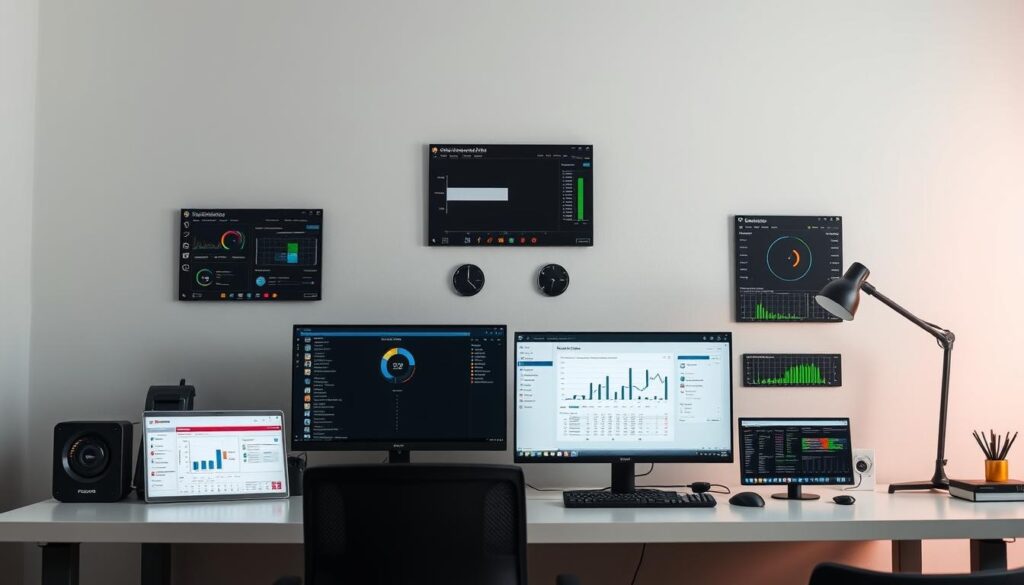
Quick Health Checks Through System Tools
Navigate to Windows Settings using Win+I, then follow System > Display > Advanced display settings. Here, the Adapter properties section displays your graphics card’s vital signs. A reassuring “Device working properly” message means your hardware passes initial inspection.
Device Manager provides deeper insights. Right-click the Start menu, select Display adapters, and review your card’s properties. This pathway helps identify driver issues or hardware conflicts that might escape casual checks.
Real-Time Performance Tracking Made Simple
Activate Task Manager with a right-click on the taskbar. The Performance tab reveals live GPU metrics like memory usage and temperature spikes. Watch these numbers while running graphics-heavy apps for authentic stress-test data. If you notice significant drops in performance or unusual artifacts during gameplay, these could be early signs of a failing GPU. Additionally, keep an eye on the temperature readings; consistently high temperatures can indicate poor cooling or hardware issues. Regular monitoring of these metrics can help you identify potential problems before they become critical.
For comprehensive analysis, launch the DirectX Diagnostic Tool via Win+R > dxdiag. The Display tab lists driver versions and detected issues. Combine this with temperature readings from Task Manager to assess cooling efficiency.
| Tool | Best For | Key Metric | Ease of Use |
|---|---|---|---|
| Windows Settings | Basic status checks | Device status | ★ ★ ★ ★ ☆ |
| Device Manager | Driver diagnostics | Error codes | ★ ★ ★ ☆ ☆ |
| Task Manager | Live monitoring | Temperature | ★ ★ ★ ★ ★ |
| DirectX Tool | Technical details | Driver version | ★ ★ ★ ☆ ☆ |
Regular checks using these methods create a maintenance rhythm that prevents surprises. Spotting minor irregularities early can save hours of troubleshooting later. Your graphics hardware deserves this simple yet effective care routine.
Interpreting Test Results and Enhancing Graphics Capabilities
Your graphics card’s metrics speak a secret language of peaks and valleys. Learning this visual vocabulary helps squeeze out every drop of performance while protecting your hardware investment. Let’s translate those numbers into actionable insights.
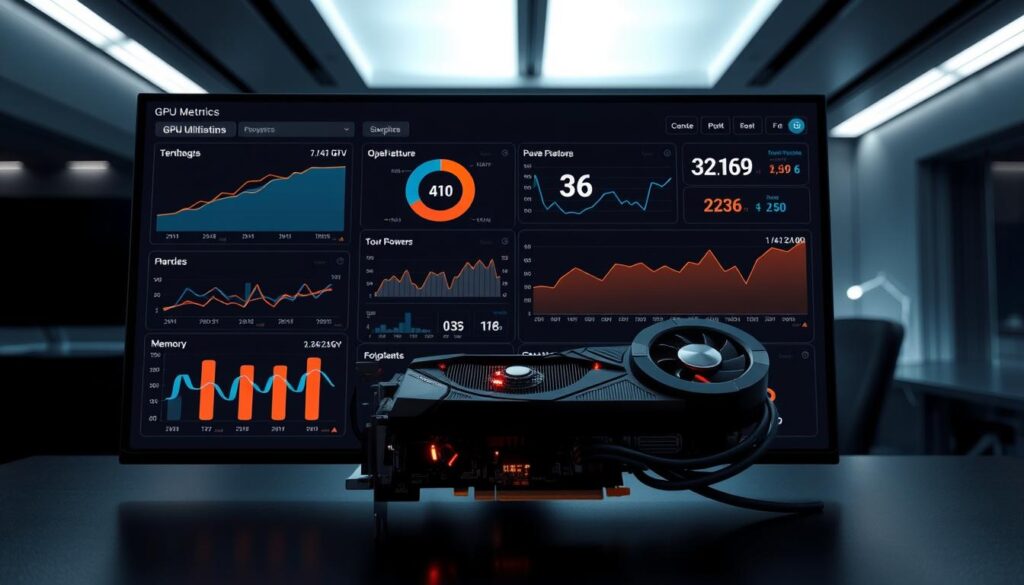
Decoding Your Card’s Vital Signs
Temperature readings below 85°C keep your graphics card happy during marathon gaming sessions. Clock speeds above base MHz numbers show your device is pushing limits safely. Consistent FPS drops below 60? Time to tweak display settings or update drivers.
Smart Optimization Techniques
Boost gaming smoothness by matching resolution to your GPU’s capabilities. 1080p often delivers better frame rates than 4K on mid-range cards. Keep VRAM usage under 90% to prevent texture loading hiccups. Regular driver downloads from manufacturer sites unlock hidden potential.
Advanced Configuration Secrets
Windows’ graphics preferences let you prioritize performance over visuals. Nvidia Control Panel and AMD Adrenalin software offer granular control over anti-aliasing and texture filtering. These tools help balance eye candy with system stability.
| Metric | Ideal Range | Action Needed |
|---|---|---|
| Temperature | 60-80°C | Improve cooling |
| Clock Speed | Base + Boost | Update drivers |
| FPS | 60+ | Lower resolution |
| VRAM Usage | Reduce textures | |
| TDP | Manufacturer spec | Check PSU |
Remember: Great graphics performance isn’t about maxing out settings. It’s finding the sweet spot where visual quality meets stable frame rates. Your card’s health data guides these decisions like a trusted co-pilot.
Conclusion
Your graphics card holds the keys to unlocking your computer’s full visual potential. With four built-in Windows tools now at your fingertips, maintaining peak performance becomes as routine as checking your email. Choose quick status updates through Settings or dive deep with DirectX diagnostics – both paths lead to smarter hardware care.
Never underestimate driver updates. These digital tune-ups transform even aging graphics cards into reliable workhorses. Set calendar reminders for monthly checks, or enable automatic downloads through your manufacturer’s app. Smooth gameplay and crisp video playback often hinge on these simple updates.
Consistent monitoring pays off like compound interest for your system. Spotting temperature spikes early prevents thermal throttling, while tracking FPS helps balance visual quality. Your gaming sessions stay buttery-smooth, and creative projects render without frustrating hiccups.
Bookmark this guide for future reference. Share these insights with friends who complain about screen tearing or lag. Together, we can keep our Windows devices running like well-oiled machines – where every pixel shines and every frame counts.
FAQ
What’s the difference between integrated and discrete graphics cards?
Why is monitoring my graphics card’s temperature important?
Can I check my GPU’s status without third-party software?
How do I use DirectX Diagnostic Tool to review my GPU data?
What settings improve gaming performance on my PC?
Does overclocking harm my graphics processing unit?
- RTX 3070 Bottleneck Calculator: Optimize Your Setup - September 27, 2025
- Optimize Your RTX 3060 Ti: Use Our Bottleneck Calculator - September 26, 2025
- GeForce RTX 5060 Bottleneck Calculator – Find Your GPU’s Limits - September 25, 2025


